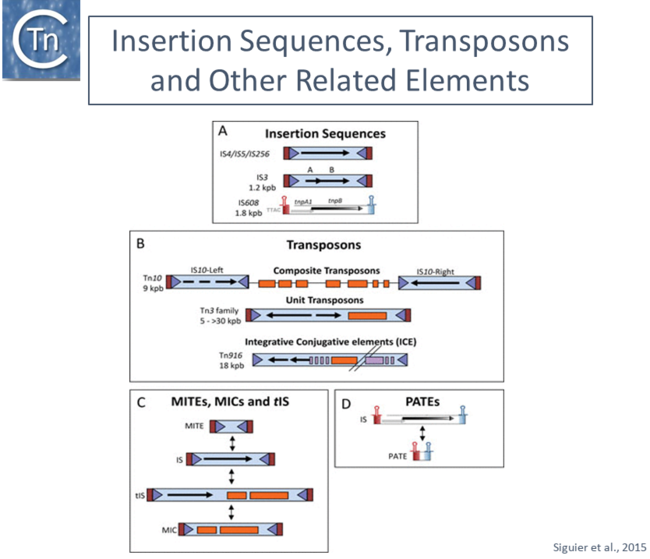Organization of different insertion sequence (IS) -related derivatives. IS with DDE transposases (Tpases) and their derivatives are shown as blue boxes,
Terminal
Inverted
Repeats as light blue triangles, and flanking direct target repeats as red boxes. The Tpase orfs are shown as black horizontal arrows. Passenger genes are shown as orange boxes and transfer functions (in the case of ICE) are shown as purple boxes. The single-strand IS are indicated with their left (red) and right (blue) subterminal secondary structures indicated.
(A) IS organization.
From top to bottom: a typical IS with a single Tpase orf; an IS in which the Tpase reading frame is distributed over two reading phases and requires frameshifting for expression; and the organization of a typical member of the single-strand IS family IS200/IS605.
(B) Different IS-related TE.
From top to bottom: composite transposon Tn
10 with inverted flanking copies of IS
10 (note that the left IS
10 copy is not autonomously transposable); a unit transposon of the Tn
3 family; and an integrative conjugative element (ICE).
(C) Relationship between IS,
Miniature
Inverted
Repeat
Transposable
Elements (MITE),
transporter
IS (tIS) and
Mobile
Insertion
Cassettes (MIC).
(D) Generation of
Palindrome-
Associated
Transposable
Elements (PATE) from IS200/IS605 family members. Extracted from
Siguier et a., 2015.
